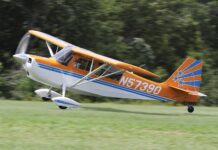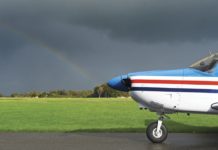Since a good landing comes from a good approach, if you fly the traffic pattern the same way each time, youre most of the way toward perfecting your landings. Try these suggestions for what to do and where to be at each point in the pattern, and youll be consistently gliding over the threshold at the proper speed and altitude. Modify as necessary for conditions, of course, but aim to hit each of these yardsticks in the pattern and youll have eliminated some of the more common problems pilots have with their landings.
1. Enter pattern in level flight, abeam the midpoint of the runway, at the recommended altitude. (1000 feet agl is recommended for most personal airplanes unless established otherwise.) The average piston-powered airplane needs no more than 150 KIAS at this point, and slower can be better, depending.
2. Maintain pattern altitude until abeam the approach end of the runway on downwind. Reduce power, add carb heat, perform other checklist items, like flaps, fuel selector or fuel pump. Begin glide.
3. Use base leg to judge progress: Are you drifting, getting too low, staying too high? Correct for wind, adjust power, look for traffic on final, add more flaps and initiate turn to final at the appropriate point.
4. Complete the turn to final between to one mile from the runway. Perform final pre-landing checklist, check gear down and confirm the airplane is configured for landing.
5. Be on-speed and in position to land as you cross the threshold. Adjust power as necessary, initiate flare/round-out, maintain directional control as the airplane slows and controls become less effective. Be prepared to add full power and go around if necessary.
6. During touchdown and throughout the roll-out, use power, rudder, aileron and brakes as necessary to maintain directional control and decelerate to taxi speed. Power should be at idle unless needed for steering.



